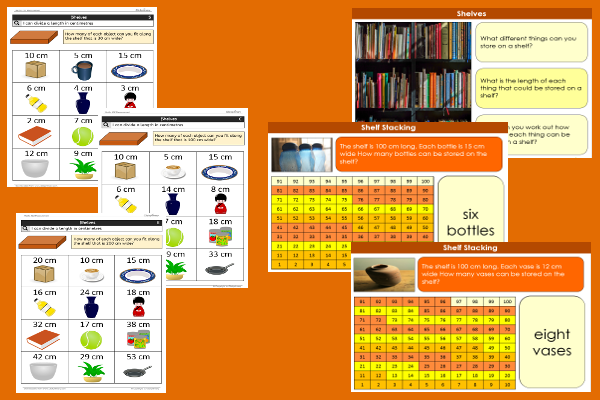Home > Key Stage Two > Maths > Number > Division > Measurements
Shelf Stacking

This maths teaching pack for Key Stage Two gets the children to calculate and record the numbers of household objects that can be stored on shelves in a family home with different lengths in centimetres.
The class can practise using diagrams to model how to divide different lengths in centimetres into equal groups with number remainders which can be rounded to express each quotient.
Download this teaching pack including classroom activities and an interactive presentation to calculate and record the numbers of household objects that can be stored on shelves in a family home with different lengths in centimetres
Activities in this teaching pack include a set of differentiated worksheets to record how to calculate numbers of objects that can be stored on shelves with different lengths to thirty centimetres for support ability levels, to one hundred centimetres for core ability levels and to two hundred centimetres for extension ability levels.
The interactive presentation gets the children to explore how to calculate the numbers of household objects that can be stored on shelves with different lengths.
This lesson is part of a maths scheme of work to get the children to practise solving problems using division number skills to divide measurements for length, capacity and mass using a range of matching units. There are teaching activities for shared learning, differentiated worksheets to support independent learning and interactive presentations to introduce concepts and key skills.
-

English SPAG Assessment
Assess abilities in composing sentences for fiction and non-fiction using the correct spellings, punctuation marks and grammar vocabulary phrases
-

Maths Arithmetic Assessment
Assess abilities in solving arithmetic number problems for addition, subtraction, multiplication and division when working with informal and formal written calculations
-

Environment
Identify and describe some of the special landscapes and locations that can be found in the world and reflect on how they can be protected and preserved for the future
-

Silent Letter Words
Explore and illustrate the meanings and spellings of some different words with silent letters when using them in a range of topics and scenarios
